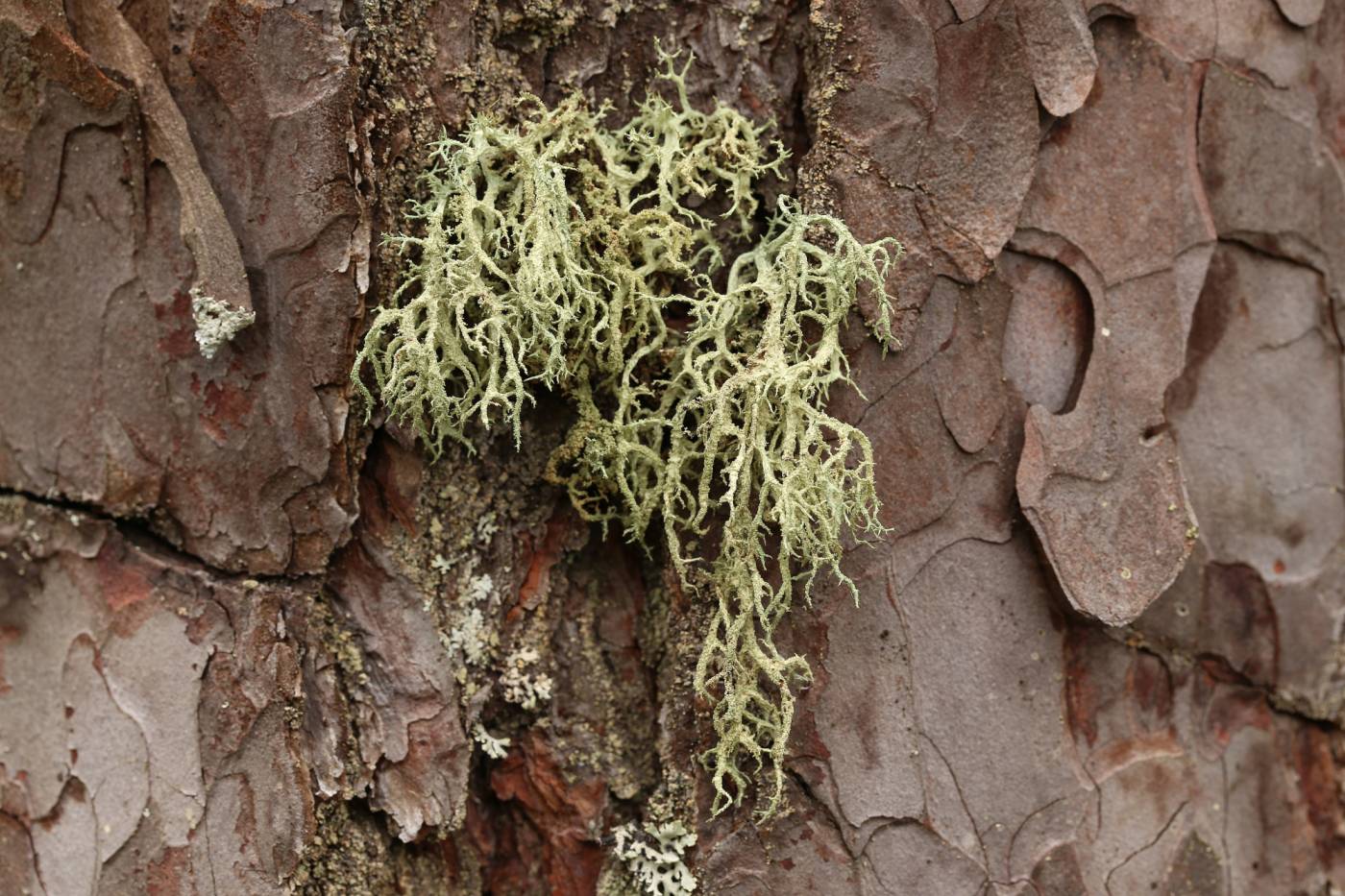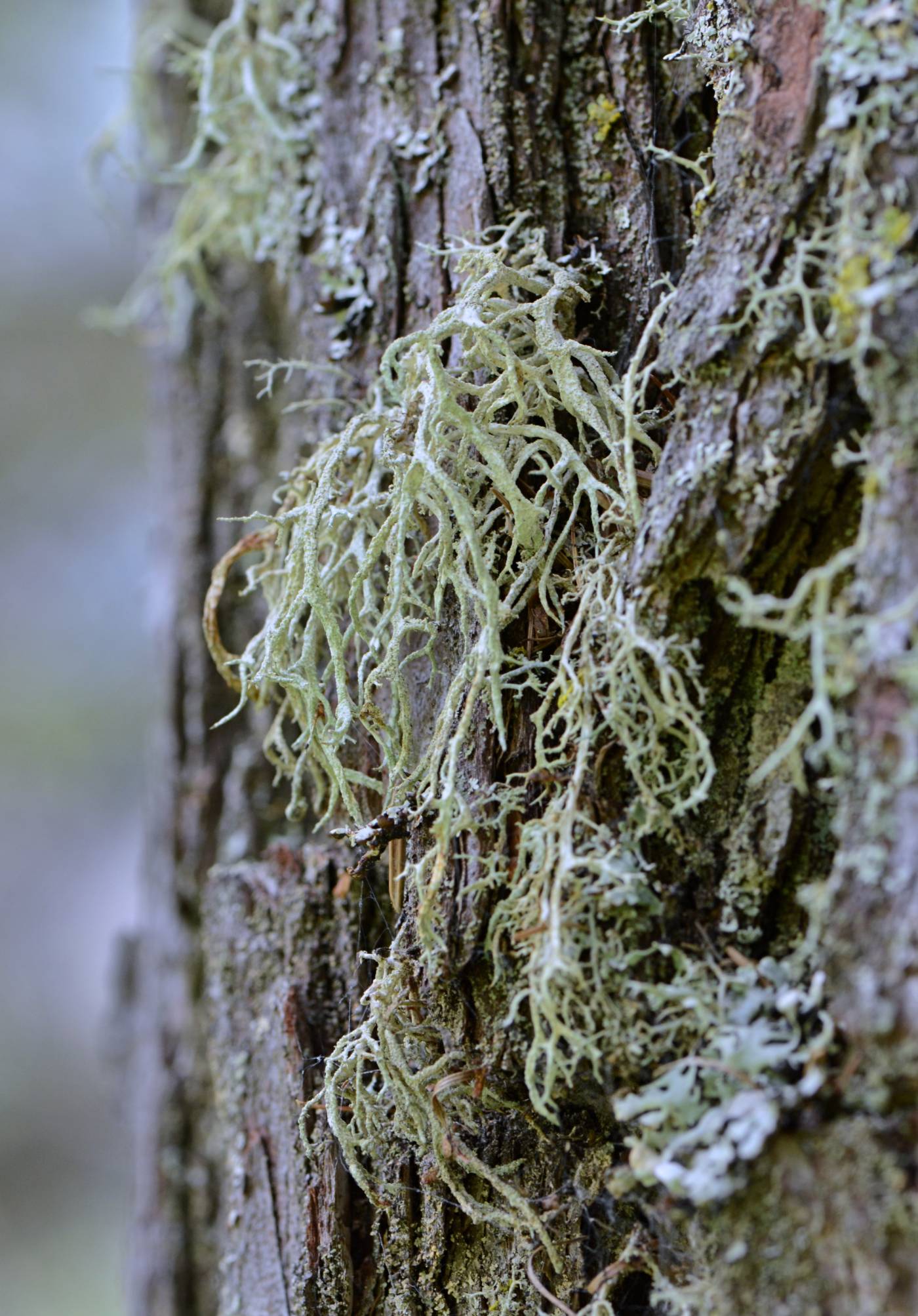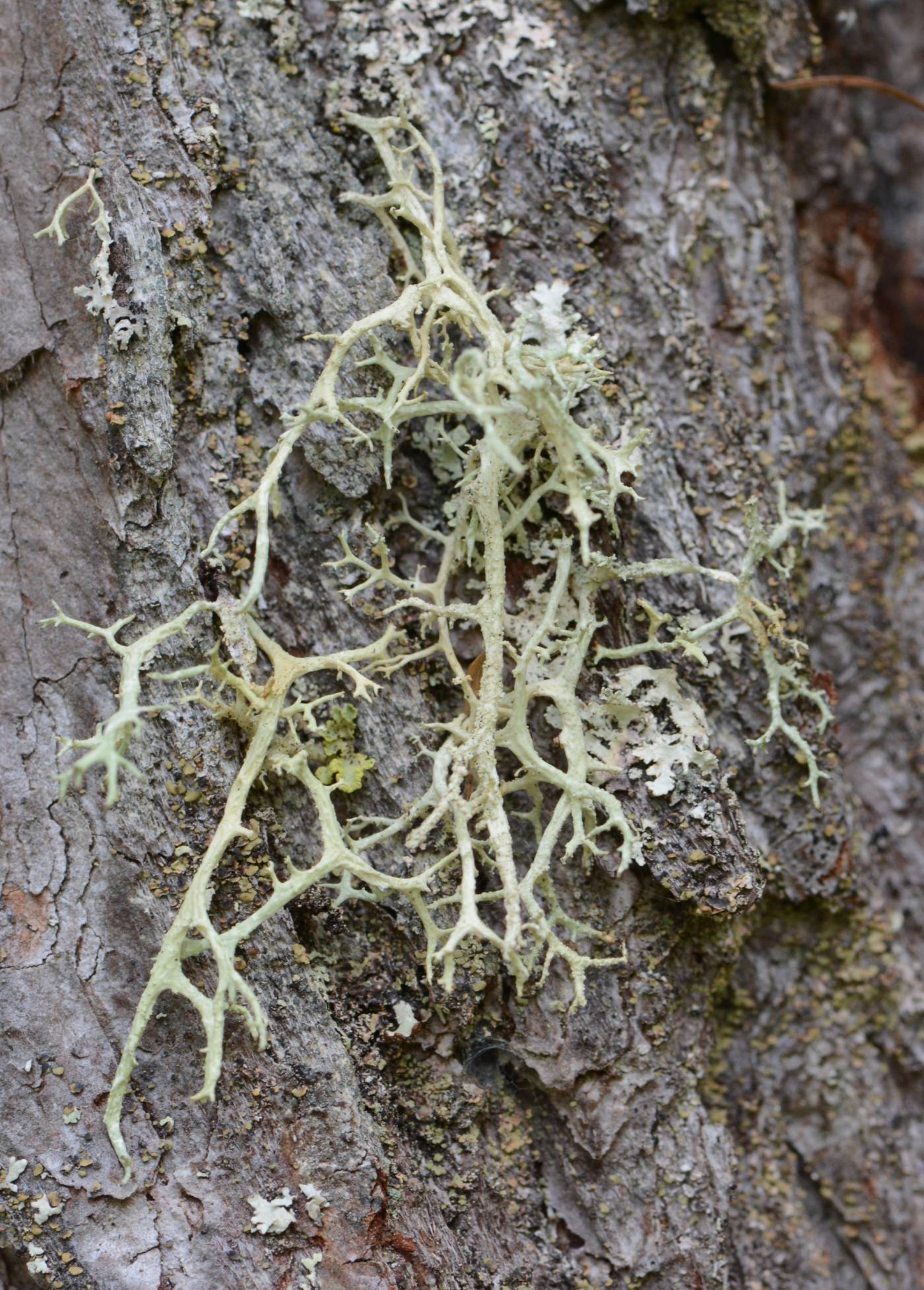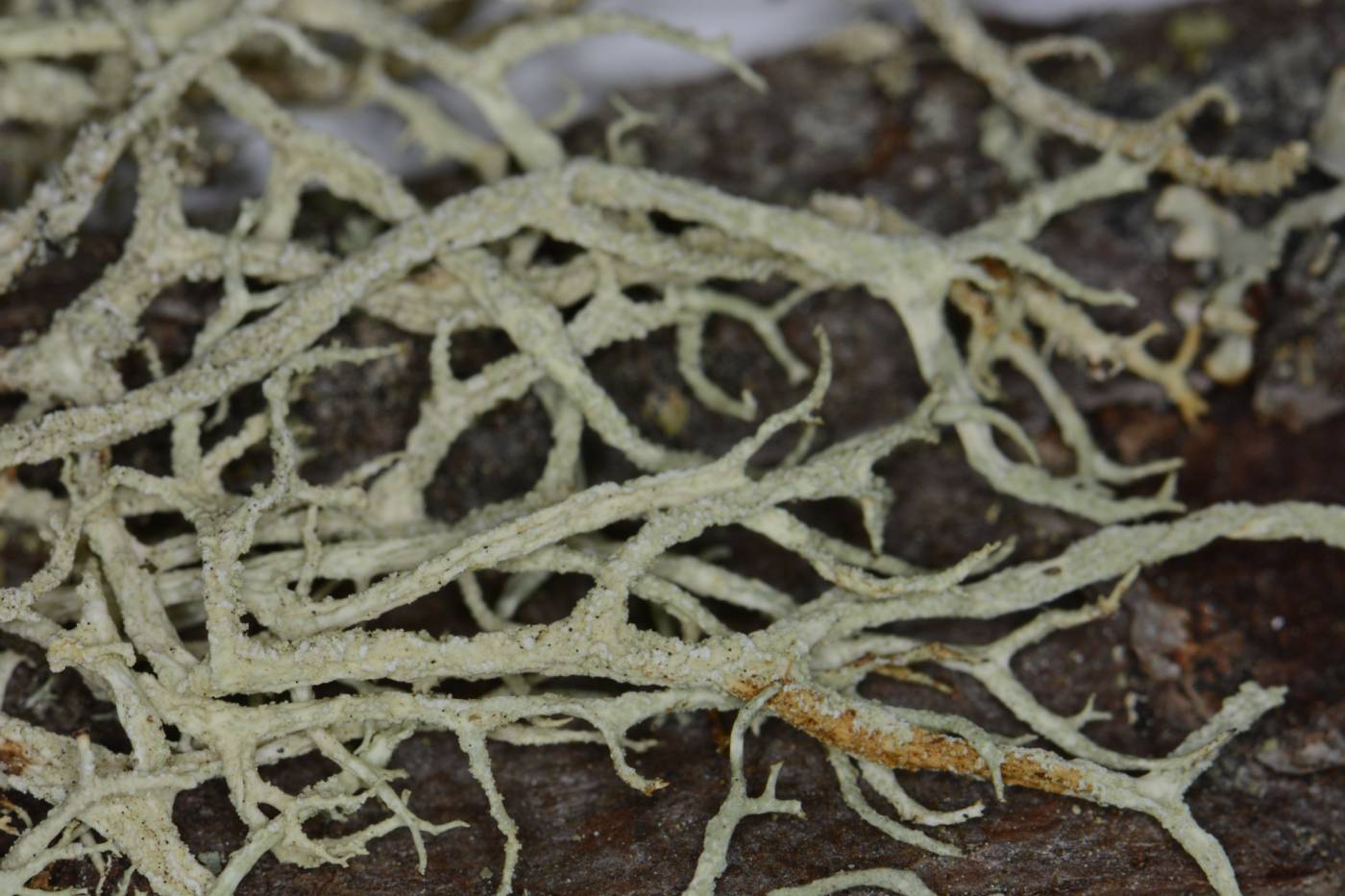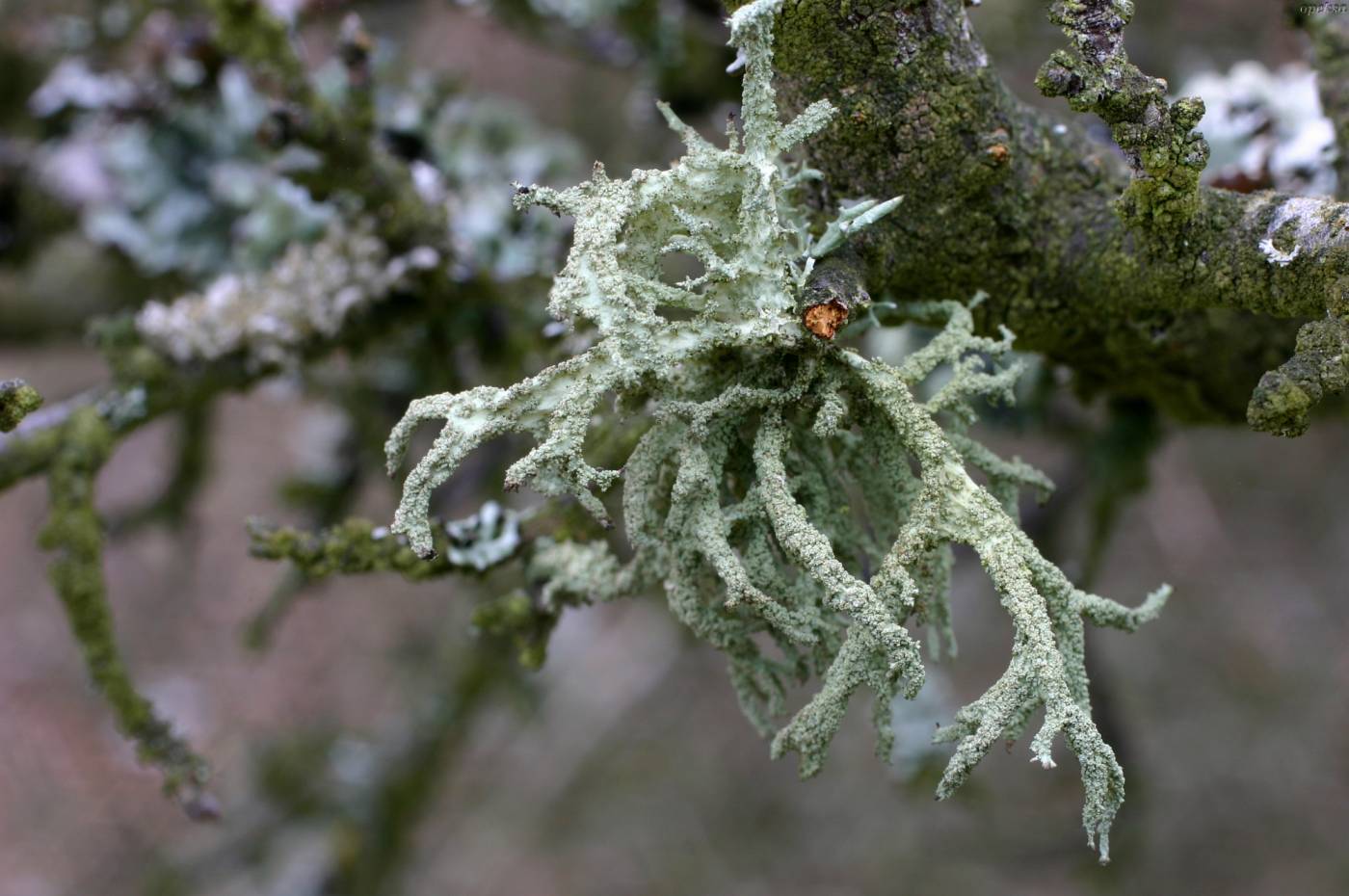Evernia mesomorpha has a characteristic isidiate thallus that helps its safe identification. It grows on coniferous and deciduous trees, on wood and sometimes even on rocks, usually in open habitats. Its overall distribution is boreo-temperate with a continental tendency. It occurs unevenly across the Northern Hemisphere, being more common in North America than in Europe. In the past, the species was very rare in the Czech Republic. Until 2010, only six findings from pines and siliceous rocks had been published (Vondrák & Liška 2010). At that time, only one locality on a siliceous rock in the Vltava valley in southern Bohemia was known. Nowadays, Evernia mesomorpha is spreading and we can find it scattered from lowlands to mountains. At lower elevations, especially in southern and western Bohemia, it has a similar character of distribution as the species E. divaricata, growing mainly in Larix decidua monocultures, and Prunus spinosa and Crataegus sp. stands. In Moravia, the lichen is probably still rare.
Literature: Suza J. (1938): Einige wichtige Flechtenarten der Hochmoore im Böhmischen Massif in den Westkarpathen. − Věstník Královské české společnosti nauk, cl. math.−natur., Praha, 1937/5: 1−33. Vondrák J. & Liška J. (2010): Changes in distribution and substrate preferences of selected threatened lichens in the Czech Republic. – Biologia 65: 595–602. Šoun J., Bouda F., Kocourková J., Malíček J., Palice Z., Peksa O., Svoboda D. & Vondrák J. (2017): Zajímavé nálezy lišejníků z čeledi Parmeliaceae v České republice. – Bryonora 60: 46–64.
taxonomic classification:Ascomycota → Lecanoromycetes → Lecanorales → Parmeliaceae → Evernia
Red List (Liška & Palice 2010):CR – critically endangered
Occurrence in the Czech Republic
All records: 59, confirmed 58. One click on a selected square displays particular record(s), including their source(s).
